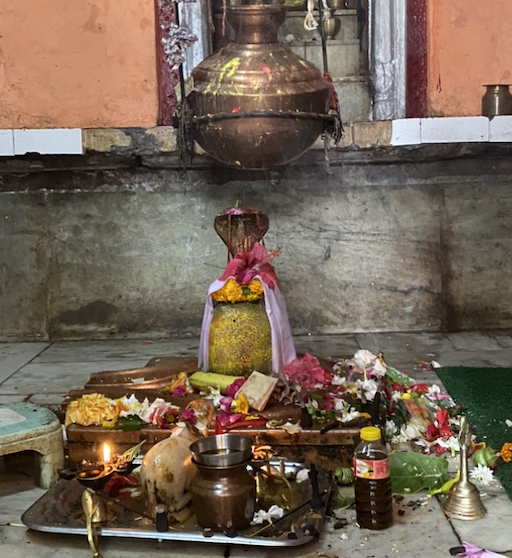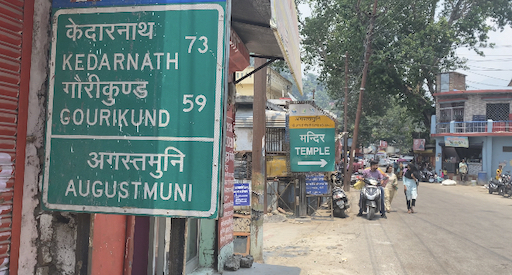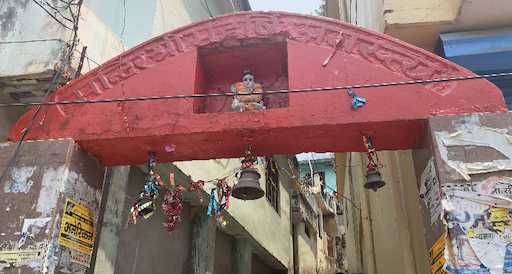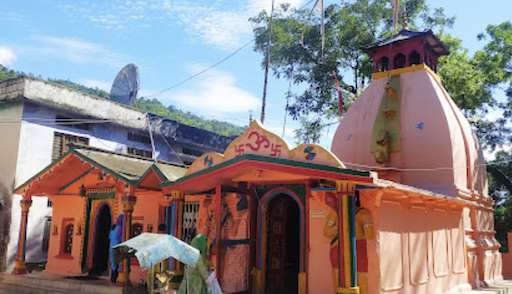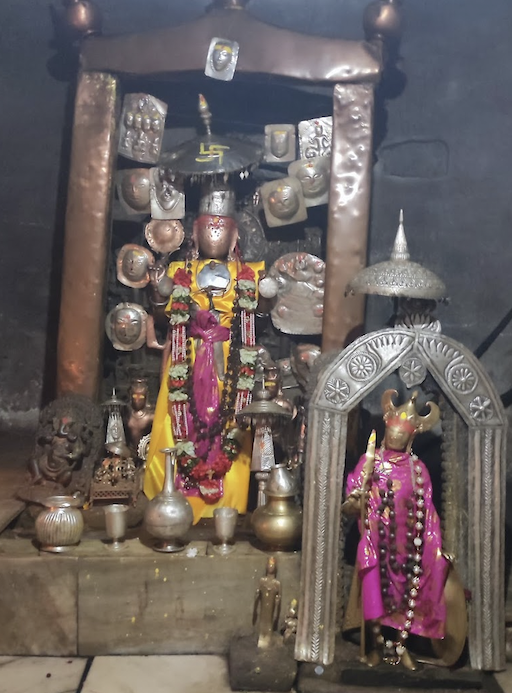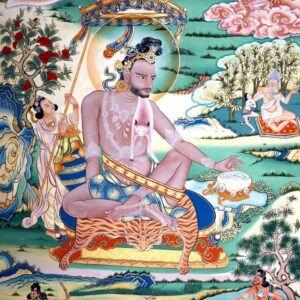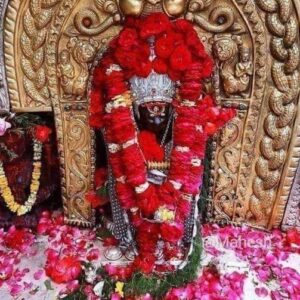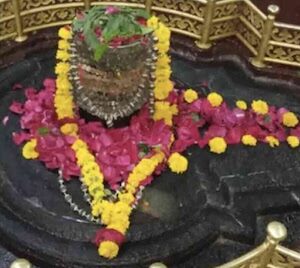This temple has two shrines. The shrine on the left has the Agasteshwar Mahadev Linga. The shrine on the right has consecrated shrine for Agastya Muni.
There is a place to sit and meditate. You can go into meditative states here effortlessly.
How to get there:
The temple is on the way from Rudraprayag to Guptkashi.
Map: https://goo.gl/maps/xKh6W4A6RSMy6Hmb7
About Agastya Muni Temple
This temple is locally known as Agasteshwar Mahadev. Inside the temple, the images of Hindu deities have been carved out on the stones on the walls. The town is also known for the fairs that local people organize here. Agastyamuni plays a host for a huge fair which takes place during the festival of Baisakhi. During this fair, devotees worship and pay their obeisance to the deity. They also throng here to celebrate the festival of Baisakhi.
Some tourists visiting here also get engage in fishing on the banks of river Mandakini. Every twelve years Lakshya Yagya is performed within the temple premises for nine days. More than One Lakh Aahuti (oblations) are offered. After the Yagya is over, Yagya Kund is closed and after 12 years the holy Yagya Kund is re-opened.
About Agastya Muni
Agastya Muni lived an extraordinary life. It is believed that he also lived an extraordinary span of life. The legend says that he lived for 4000 years.
We do not know whether he lived for 4000 years, but he definitely lived much longer than a normal human lifespan. If you look at the volume of activity he performed in his life, it does not look like he died in 100 years’ time. He must have lived for at least 400 years because the volume of activity he performed is not possible within a normal human lifespan. Today, we are jetting around and driving around, so we are able to do so many more things in a short span of time. But the kind of travel Agastya did on foot, it is impossible for a man to have done that much activity in a normal span of human life. He definitely lived very long.
Agastya Muni – The Father of Southern Indian Mysticism
Yoga came in a particular format to Southern India through Agastya. In many ways, Agastya is the father of Southern Indian mysticism.
All the siddhars of Southern India are very much in the tradition of Agastya. Southern Indian mysticism has a different flavor to it. That is because of Agastya. In a way, everything that I do is just a small extension to Agastya’s work. He built a colossus of a place. We are just adding one extra room to it. He ensured that some element of spirituality is in everyone’s life. It may be going away, but if you just look at the last generation, it is still very much there. Even a simple peasant in southern India has some element of spirituality in him. This was Agastya’s work.
If you go to the southern part of India, anywhere south of the Vindhyachal mountains, in almost every village, people will say, “Agastya Muni meditated here, Agastya Muni lived in this cave, Agastya Muni planted this tree.” There are an endless number of stories like this because he touched every human habitation south of the Himalayas with a spiritual process – not as a teaching, religion, or some kind of philosophy, but as a part of life. As your mother taught you how to get up in the morning and brush your teeth, the spiritual process was taught like that.
Read More
https://isha.sadhguru.org/us/en/wisdom/article/agastya-muni-father-southern-india-mysticism
https://www.chardhamtours.in/uttarakhand/augustmuni/agastya-muni-temple_163.html
